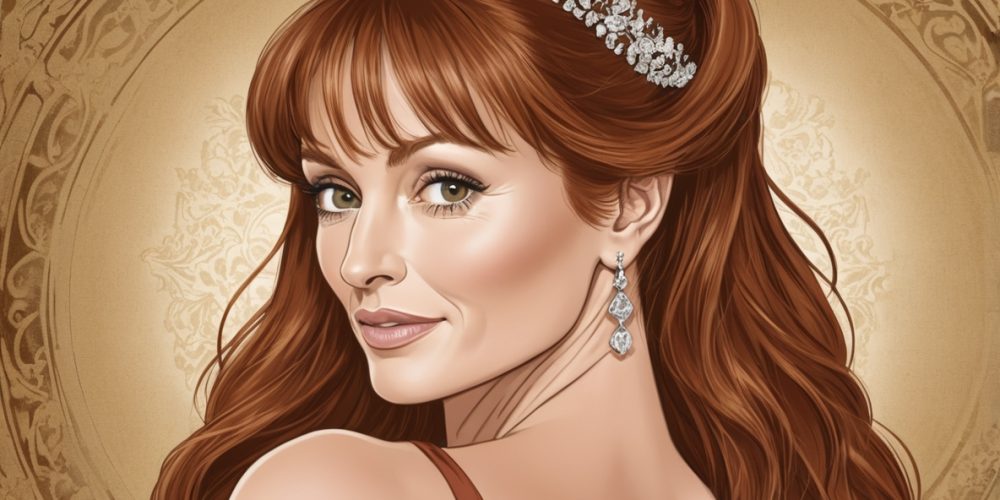Roses have long served as a symbol of love, passion, and transformation. For Jane Seymour, the connection to roses extends beyond floral arrangements and garden aesthetics. This timeless flower threads itself through her career choices, personal life, and public image, shaping the way audiences perceive her.
A Timeless Elegance Rooted in Symbolism
Jane Seymour built a career on roles that exude grace and strength. Roses, often associated with classic beauty and quiet resilience, mirror her presence on screen. Her early performances established her as a figure of refinement, much like the flower itself.
Roses in Film and Television
The presence of roses in Seymour’s body of work is more than coincidental. Several of her most iconic projects involve themes closely tied to the symbolism of this flower.
- “Somewhere in Time” (1980): This romantic fantasy film cemented Seymour as a symbol of timeless love. Roses, often seen in the film’s imagery, reinforce the story’s themes of devotion and destiny.
- “Dr. Quinn, Medicine Woman” (1993-1998): As Dr. Michaela Quinn, Seymour embodied perseverance and compassion. The rose, frequently associated with healing properties in folklore, subtly aligns with the essence of her character.
- “The Scarlet Pimpernel” (1982): Playing Marguerite St. Just, Seymour starred in a film filled with historical depth and intrigue. Roses have long symbolized secrecy and coded messages, themes central to this classic story of hidden identities and sacrifice.
Roses as a Personal Signature
Beyond the screen, Seymour has embraced roses in her personal and professional branding. From her lifestyle ventures to her philanthropic efforts, the flower continues to be a visual and thematic motif.
Jewelry and Fashion Influence
Seymour’s jewelry line, “Open Hearts by Jane Seymour,” subtly incorporates floral elements in its designs. While the primary theme revolves around love and resilience, the delicate curves and flowing lines evoke the softness of rose petals.
In fashion, she often gravitates toward floral patterns and classic silhouettes that enhance her graceful presence. Red and pink, shades often linked to roses, frequently appear in her wardrobe, reinforcing the connection.
The Rose as a Symbol of Personal Growth
Seymour’s life has been marked by reinvention and artistic expansion. Much like a rose that blooms despite thorns, she has navigated personal challenges while continuing to thrive in her career.
Key Moments Reflecting the Rose’s Symbolism
- Resilience in Hollywood: Transitioning from Bond girl to respected dramatic actress required adaptability. Her ability to take on diverse roles reflects the layers of a rose’s petals, each unfolding to reveal something new.
- Entrepreneurial Ventures: From painting to publishing, Seymour has cultivated multiple passions. The rose, a flower deeply tied to artistry and inspiration, aligns with her creative pursuits.
- Philanthropic Work: Actively involved in charitable efforts, particularly those focusing on children and health, Seymour embodies the nurturing qualities often associated with roses.
Cultural and Historical Parallels
The rose holds a place in history as a powerful emblem. From the Wars of the Roses in England to its representation in literature and poetry, the flower carries layers of meaning that resonate with Seymour’s career choices and public persona.
Shakespearean Influence
Seymour’s work often reflects themes found in Shakespearean literature, where roses frequently symbolize both love and tragedy. Her ability to portray characters with emotional depth ties into these classic motifs.
Hollywood’s Love Affair with Roses
Film and television have long used roses as a shorthand for romance, mystery, and elegance. Seymour, often cast in roles that require an air of sophistication, naturally aligns with this imagery.
Legacy in Bloom
The symbolic connection between Jane Seymour and roses extends beyond aesthetics. It represents endurance, beauty, and reinvention—qualities that define her decades-long career. Just as roses remain timeless, so does her presence in entertainment and beyond.
